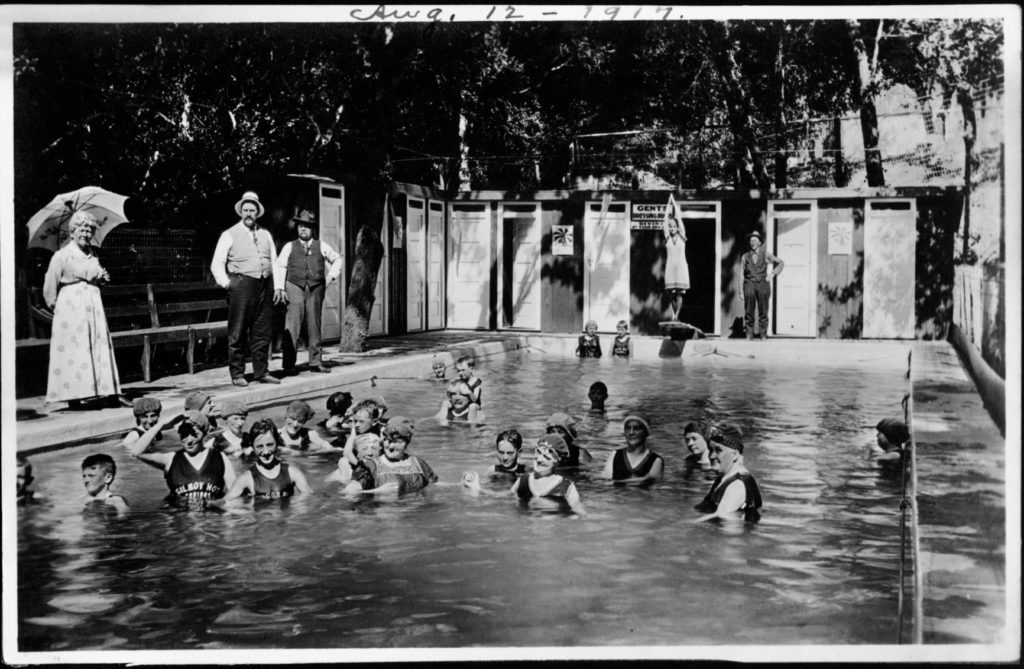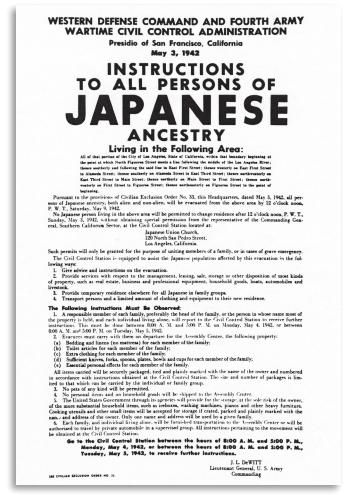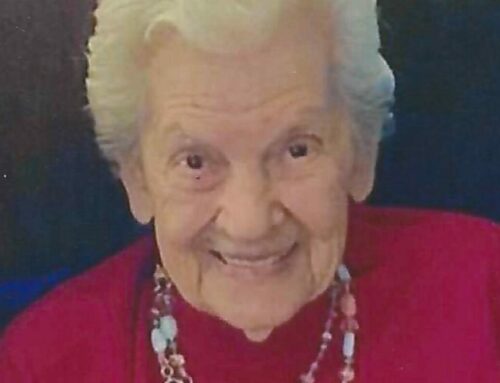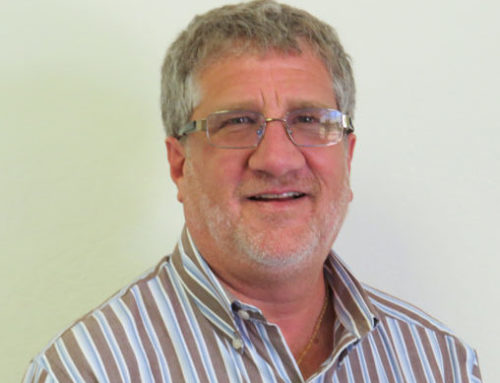Executive Order 9066 was the blade of the guillotine that severed families and communities
![]()

By Laura Dominguez-Yon

 February 19 marked the 80th Day of Remembrance (DOR), the anniversary of the 1942 signing of Executive Order 9066 by President Franklin Delano Roosevelt. It authorized the removal of 125,000 people of Japanese ancestry from the West Coast. (About 120,000 were sent to confinement sites. Two-thirds of them were American citizens, born in the United States. About 5,000 went to Department of Justice or FBI prisons).
February 19 marked the 80th Day of Remembrance (DOR), the anniversary of the 1942 signing of Executive Order 9066 by President Franklin Delano Roosevelt. It authorized the removal of 125,000 people of Japanese ancestry from the West Coast. (About 120,000 were sent to confinement sites. Two-thirds of them were American citizens, born in the United States. About 5,000 went to Department of Justice or FBI prisons).
Thanks to Patti Hirahara (search “Hirahara Collection” for context) the FDR Presidential Library participated in the DOR events for the first time. (Watch their presentation at www.youtube.com/watch?v=FoijlJY8Kx0 ). It shows a new perspective for FDR and Eleanor Roosevelt regarding E.O. 9066.
 Hirahara also shared a video of Anna Eleanor Roosevelt, FDR’s granddaughter and board chair for the Roosevelt Institute, giving an apology for the harm E.O. 9066 caused Japanese Americans. (View it at www.rooseveltinstitute.org/2022/02/17/statement-roosevelt-institute-reflects-on-wrongful-japanese-incarceration-80th-anniversary-of-fdr-signing-of-executive-order-9066.)
Hirahara also shared a video of Anna Eleanor Roosevelt, FDR’s granddaughter and board chair for the Roosevelt Institute, giving an apology for the harm E.O. 9066 caused Japanese Americans. (View it at www.rooseveltinstitute.org/2022/02/17/statement-roosevelt-institute-reflects-on-wrongful-japanese-incarceration-80th-anniversary-of-fdr-signing-of-executive-order-9066.)
This shared research and public apology from the FDR Presidential Library and the Roosevelt Institute are welcomed and appreciated. They serve as a step toward healing and a demonstration of remorse. DOR is an opportunity to learn from the past. It is a willingness to pick at the scabs in order to help avoid the mistakes of yesterday and help heal the wounds.
E.O. 9066 was the blade of the guillotine that severed families and communities. The order separated the past from the present including traditions, values, culture, heritage, and one’s sense of self. Following the end of the war, Gilroy Yamato Hot Springs provided the renewal of life, reconnection to health, family, sanity, healing, and the re-entry into American society.
 A former vacation resort located at the end of Roop Road in the Diablo range east of Gilroy, GYHS became a War Relocation Authority resettlement hostel. It gave a temporary home for people returning from the camps to restart their lives and to re-integrate into society. It hosted 60 families, some 150 individuals who came from the confinement camps. This included seven members of my family, including the captain who was hired to be site manager with the assistance of two Caucasians. If you might know who these two were, know someone who knows, or know any of the 60 families, please let me know so we can share their stories.
A former vacation resort located at the end of Roop Road in the Diablo range east of Gilroy, GYHS became a War Relocation Authority resettlement hostel. It gave a temporary home for people returning from the camps to restart their lives and to re-integrate into society. It hosted 60 families, some 150 individuals who came from the confinement camps. This included seven members of my family, including the captain who was hired to be site manager with the assistance of two Caucasians. If you might know who these two were, know someone who knows, or know any of the 60 families, please let me know so we can share their stories.
 This year we are re-claiming GYHS as a resettlement center in order to educate the public about E.O. 9066, the events, the reactions, the analysis, and the lessons for the future. GYHS qualifies for a National Park Service Confinement Site Grant. I expect to apply for the grant to help restore GYHS and highlight its history as a resettlement center.
This year we are re-claiming GYHS as a resettlement center in order to educate the public about E.O. 9066, the events, the reactions, the analysis, and the lessons for the future. GYHS qualifies for a National Park Service Confinement Site Grant. I expect to apply for the grant to help restore GYHS and highlight its history as a resettlement center.
In 2022, we are examining the full stories of underrepresented groups at GYHS — the Japanese (1938-1965) and the women (1862-2003). Who were these people? What are their stories? What more should we learn and remember about them? Let’s learn from history to avoid another injustice like Executive Order 9066.
Laura (Kitaji) Dominguez-Yon is the founder of the advocacy group The Friends of Gilroy Hot Springs. It evolved in 2020 into the nonprofit Gilroy Hot Springs Conservancy to restore the historic cabins and establish camping sites for visitors to learn about its rich history.






